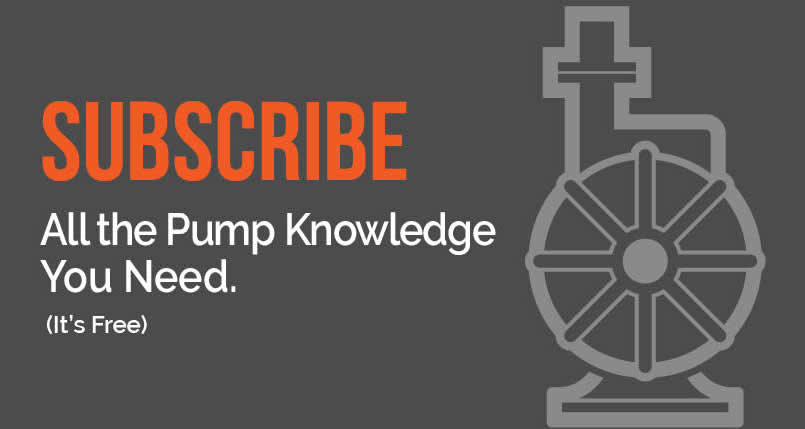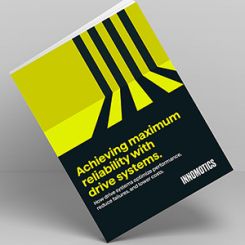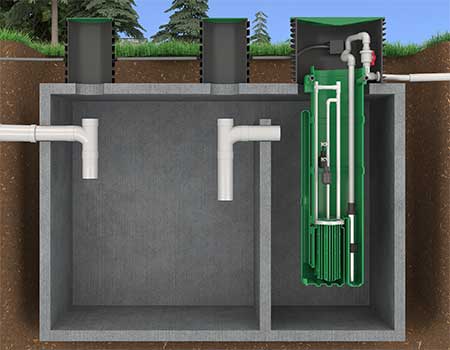
From remote mountain communities to coastal developments, engineers are often challenged with moving wastewater when gravity will not cooperate. Enter the low-pressure sewer (LPS) system. It conveys wastewater uphill, around obstacles and over long distances, using distributed pump stations to pressurize small-diameter pipes. These systems are redefining wastewater infrastructure in areas where gravity-based options are impractical or cost-prohibitive.
Advantages Over Gravity Systems
Traditional gravity systems depend on a continuous slope to move wastewater, which can become expensive or unfeasible in areas with rocky soils, high water tables or rolling terrain. LPS systems can follow the land’s natural contours, avoiding deep trenching and extensive excavation. This makes them affordable to install and easy to route around existing infrastructure or environmentally sensitive areas.
Unlike gravity sewers, which often allow some level of inflow and infiltration (I&I), pressure systems are fully sealed and hydrostatically tested. This not only protects groundwater from contamination but also keeps unwanted water out of the system, reducing unnecessary costs.
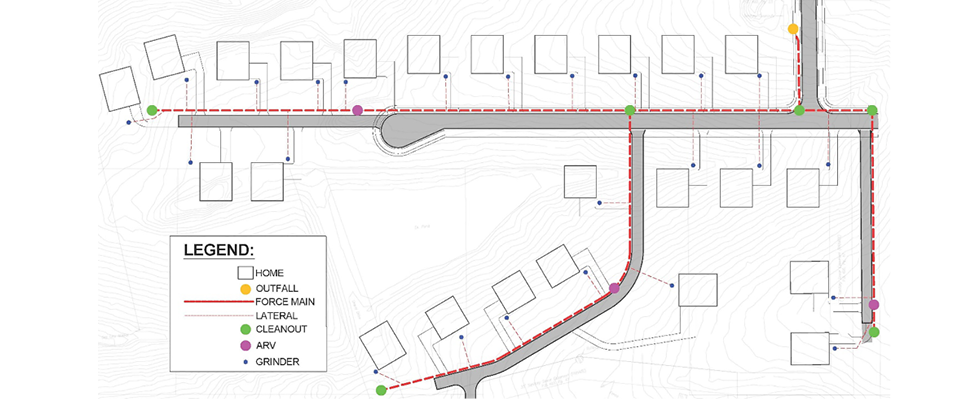
Pump Company)
Another advantage is the system’s scalability. Once the force main is in place, new pump stations can be added as homes or buildings are constructed. This phased development model reduces upfront capital investment and allows utility infrastructure to expand in tandem with actual demand. Horizontal directional drilling further reduces community disruption by allowing pipe installation under obstacles without open trenching.
The Role of Pumps in LPS Systems
Pump selection is critical to the success of an LPS system. Most designs rely on either grinder pumps or turbine pumps.
Grinder pumps are the most common choice in traditional pressure sewer applications where raw wastewater—including solids, fats, oils and grease—must be conveyed. These pumps grind solids into a fine slurry, making it easier to transport through small-diameter force mains. There are two main types of grinder pumps: progressing cavity (PC) and centrifugal.
PC grinders operate at low speeds (typically 1,750 rotations per minute [rpm]) and can handle high heads at an average flow of 11 gallons per minute (gpm). They are well suited for residential installations where high head capacities are required. However, due to their limited flow capacity, commercial applications may require multiple pumps and larger basins to accommodate higher demands.
Centrifugal grinders run at higher speeds (around 3,450 rpm) and provide greater flow, helping to maintain scouring velocities that prevent solids from settling in the pipe. Their higher throughput and better solids handling make them a good option for both residential and commercial applications.
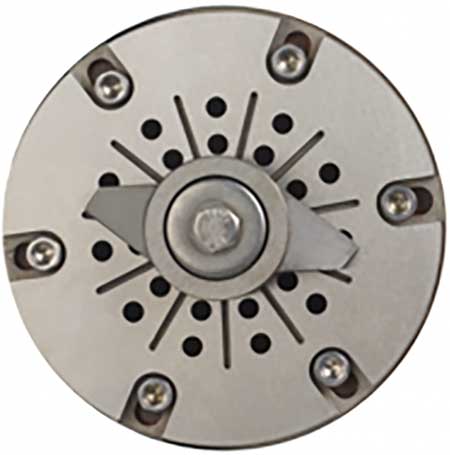
Grinder pumps are typically installed in outdoor lift stations. These stations commonly use either a flexible discharge hose or a rail system for pump removal. Rail systems are generally recommended, as they simplify pump maintenance and allow for easier removal and reinstallation of the unit.
Turbine pumps, by contrast, convey filtered effluent from septic tanks or pretreatment units. Solids remain and are treated on-site, which reduces the waste strength reaching downstream treatment facilities. Because the collection network carries mostly liquid, concerns like scouring velocity and solids buildup are minimized, allowing for greater flexibility in pipe sizing and system layout. These pumps may be installed in separate pump tanks or directly inside the septic tank, but in either case, a filtering mechanism is required to protect the pump.
Key Supporting Components
Several system components work together to ensure the reliability and maintainability of an LPS network.
Combination air release/anti-siphon valves are installed at high points in the force main to eliminate trapped air that restricts flow. These valves also prevent unwanted siphoning of pump vaults, which can lead to nuisance alarms or pump failure.
Flush connections are another essential feature. Terminal flush points should be installed at the end of each force main, and additional connections should be added at changes in direction, at intersections and roughly every 1,000 feet in long straight runs. These access points allow utility crews to clean out the lines and remove buildup, keeping the system flowing smoothly.
Curb stops isolate individual connections from the collection system. Each curb stop includes a check valve and shutoff valve, typically located near the property line for easy access. In the event of a leak or maintenance issue, service to a single property can be stopped without affecting the rest of the system. Isolation valves placed throughout the collection network also allow utility crews to isolate and service specific sections as needed.

The piping material used must be able to withstand internal pressure and external environmental conditions. High-density polyethylene (HDPE) DR11, polyvinyl chloride (PVC) SDR 21 and Schedule 40 PVC are standard choices, all rated to at least 160 pounds per square inch (psi).
Design Methodologies
Accurate design begins with hydraulic modeling. Engineers typically choose between two methods to estimate flow and size the force main: the probability method or the rational method.
The probability method is tailored for systems with PC grinder pumps. It estimates how many pumps are likely to run at the same time and calculates system flow accordingly. This method is useful in neighborhoods with uniform residential use but becomes less reliable when commercial facilities are involved.
In contrast, the rational method calculates peak system flow using the equation Q=AN+B, where A is typically 0.5, N is the number of equivalent dwelling units (EDUs) and B is typically 20 gpm but can be adjusted, provided it does not exceed the maximum flow capacity of a single pump. This method is suitable for both centrifugal and PC pump systems and allows designers to easily account for mixed use developments by converting nonresidential flow into EDU equivalents.
Installation, Operation & Monitoring
Proper installation practices are vital to the long-term success of an LPS system. Directional boring is commonly used to install pipe with minimal disruption to existing surfaces. Pump stations are typically placed outdoors for easier service access and should be installed with future maintenance in mind.
Sealing is one of the most critical factors in system performance. All components, including pump basins, lids and inlet pipes, must be watertight to prevent infiltration from rain, groundwater or runoff. If unwanted water enters the system, it increases pump run times and wear on components. Excessive infiltration can also overwhelm downstream infrastructure.
A control panel is recommended to manage pump operation and to provide alarms in the event of system malfunction. For even greater reliability and operational insight, remote telemetry can be added. These systems allow utilities to monitor pump performance, receive failure alerts, track run times and plan preventative maintenance.
An Alternative to Gravity Sewers
LPS systems offer a scalable, efficient and environmentally sound alternative to gravity sewers. Whether navigating steep terrain, expanding with phased development or protecting infrastructure in flood-prone areas, LPS provides flexibility. By understanding the system’s components, pump technologies and design best practices, engineers and utilities can deploy LPS confidently—ensuring reliable performance, lower environmental impact and better service for communities.
